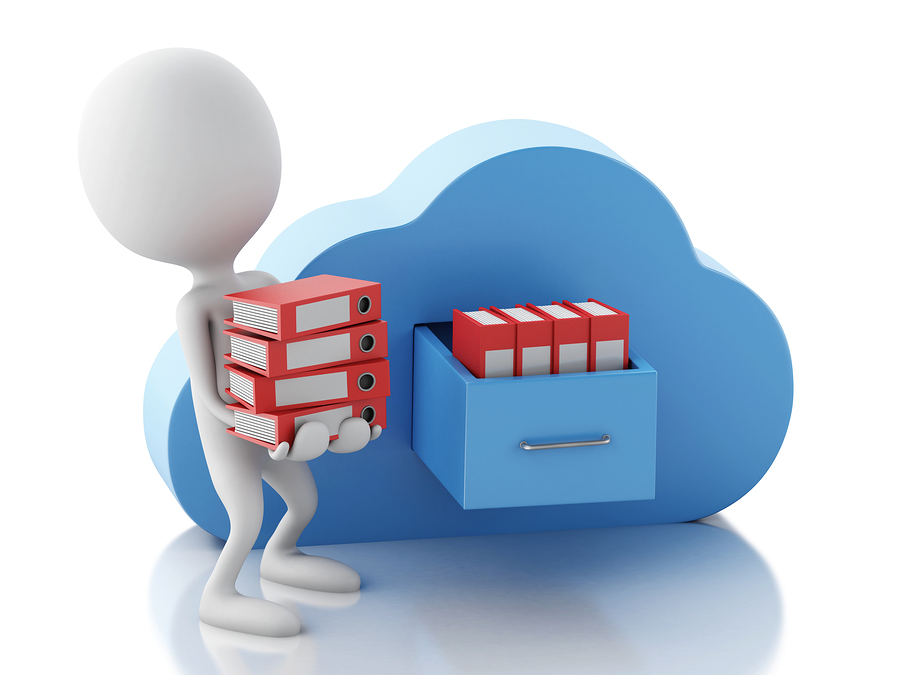NetWorker 9.2.1 has just been released, and the engineering and product management teams have delivered a great collection of features, in addition to the usual roll-up of prior cumulative patch releases, etc. There’s some great Cloud features in 9.2.1, regardless of whether you’re working with a private cloud in your datacentre, consuming VMware in AWS, or using CloudBoost to get to object storage.
There’s some great Cloud features in 9.2.1, regardless of whether you’re working with a private cloud in your datacentre, consuming VMware in AWS, or using CloudBoost to get to object storage.
VMware’s move into the AWS cloud environment has opened up new avenues for customers seeking a seamless hybrid cloud model, and that wouldn’t be complete without being able to extend an on-premises data protection policy into the VMware environment running in AWS. So, NetWorker 9.2.1 includes the option to perform image based backups of VMware virtual machines in AWS. This is round one of support for VMware backups in AWS – as is always the case (and why for traditional AWS virtual machine backups you usually have to deploy an agent), what you can or can’t do is dependent on what level of access you have to the hypervisor. In this case, VMware have focused in their first round of enablement for data protection on image based backup and recovery. If you’ve got VMware systems in AWS that require highly granular file level recovery regularly, you may want to install an agent for those, but for ‘regular’ VMware virtual machines in AWS where the focus is being able to do high speed image level backups and recoveries, NetWorker 9.2.1 has you covered.
NetWorker 9.2.1 also supports vRealize Data Protection Extension 4.0.2, so if you’re building a private cloud experience within your environment, NetWorker will be up to date on that front for you, as well.
Finishing up with on cloud support, CloudBoost has also been updated with this release, and has some enhancements for efficiency and reporting that’ll make this update a must if you’re using it to get data onto public object storage.
Regular VMware users aren’t left out either – there’s now a new option to recover virtual machine configuration metadata as well as virtual machine data, which can be a particularly useful option when you’re doing an in-place recovery of a virtual machine. Also, if you’ve got an ESXi server or servers within your environment that aren’t under vCenter control, you’re now covered by NetWorker as well – virtual machines on these systems can also be backed up.
9.2.1 also lets you used unserved NetWorker licenses. In prior 9.x releases, it was necessary to use a license server – either one for your entire company, or potentially more if you had different security zones. Now you can associate issued licenses directly with NetWorker servers if you need to, rather than serving them out of the license server – a very handy option for dark or secured sites.
Directives. With 9.2.1 (and rolling back to the 9.2 clients too), you can now use wildcards in the directory paths. This is going to be a really useful scenario for database servers. For instance, it was quite common to see directives such as:
<< /d/u01/database >> +skip: *.dbf << /d/u02/database >> +skip: *.dbf << /d/u03/database >> +skip: *.dbf
Under earlier versions of NetWorker, if a new mount point, /d/04 were added, you had to remember to update the directives to exclude (say in this example), database files from that filesystem from your backup. Now instead, you can just have a catch-all directive of:
<< /d/*/database >> +skip: *.dbf
Or if you wanted to be more specific and only do it against mount-points that started with a ‘u’ and had 2 letters following:
<< /d/u??/database >> +skip: *.dbf
Check out the wildcard support in the administrator’s guide for 9.2.1 (around p339).
From an availability perspective, you can now do a NetWorker disaster recovery straight from a Data Domain Cloud Tier device if you so need to. You also now get the option of using RecoverPoint for Virtual Machines (RP4VM) to replicate your NetWorker server between sites for seamless failover capabilities. If you’re using RP4VM at the moment, this really boosts your capability when it comes to protecting your backup environment.
There’s some command line enhancements as well, such as being able to force an ad-hoc backup for a workflow, even if the workflow’s policy is set to do a skip on the particular day you’re doing it.
Security isn’t missed, too. In situations where you have to backup via a storage node (it happens, even to the best of us – particularly in secure zones), you’ve now got the option to enable in-flight encryption of data between the client and the storage node. This therefore allows a totally encrypted datapath of say:
Client <Encrypted> Storage Node <–DDBoost Encrypted–> Data Domain
or
Client <Encrypted> Storage Node <–Tape FC Encryption–> Tape Drive
Obviously, the preference is always to go direct from the client to protection storage, but if you do have to go via a storage node, you’re covered now.
Logging gets enhanced, too. There’s now automatic numbering of lines in the log files to make it easier to trace messages for support and self-support.
Finally, NAS isn’t left out, either. There’s NetWorker Snapshot Management support now for XtremIO X2, and NetApp OnTAP 9.2. (On the NDMP front though – and I know snapshots are different, check out the insane levels of performance that we can get from dense filesystems on Isilon now, though.)
So, I’d planned to have a pretty quiet weekend of sitting under a freezing air-conditioner, out of the heat, and doing as little as possible. It seems instead I’ll be downloading NetWorker 9.2.1 and getting it up and running in my lab. (Lucky there’s room under the air-conditioner for my laptop, too.)